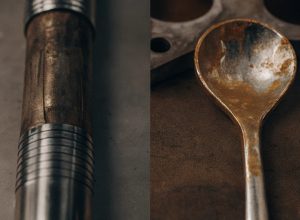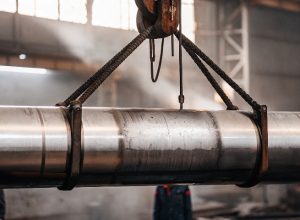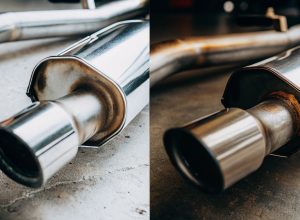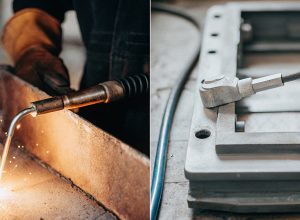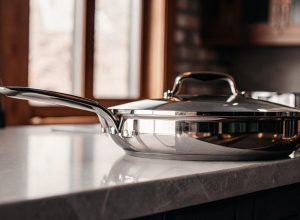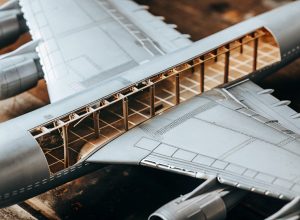Haben Sie Schwierigkeiten, verschiedene Metalle zu verbinden? Das direkte Schweißen von rostfreiem Stahl auf Titan führt oft zu einem katastrophalen Versagen. Ich sehe dieses Problem häufig, aber es gibt zuverlässige Lösungen.
Nein, man kann nicht direkt WIG-geschweißt an Titan arbeiten. Dieses Verfahren erzeugt sehr spröde intermetallische Verbindungen1 an der Verbindungsstelle, wodurch die Schweißnaht bei minimaler Belastung reißt. Die Schweißnaht sieht zwar glänzend aus, hat aber keine strukturelle Integrität, was sie für jede Anwendung völlig unzuverlässig macht.
Die kurze Antwort ist also ein klares "Nein". Aber in meiner Funktion, in der ich mit Hunderten von technischen Vertriebsmitarbeitern wie Sophie und ihren Kunden spreche, weiß ich, dass das nie das Ende des Gesprächs ist. Ein einfaches "Nein" hilft ihnen nicht bei der Lösung ihrer Designherausforderung. Sie müssen verstehen warum scheitert und, was noch wichtiger ist, welche Methoden tun Arbeit. Das eigentliche Ziel besteht darin, eine starke, dauerhafte Verbindung zwischen diesen beiden hervorragenden Materialien herzustellen. Gehen wir den Fragen auf den Grund, die ich auf Messen am häufigsten höre, um die richtigen Antworten zu finden.
Kann man rostfreien Stahl auf Titan schweißen?
Sie wollen Edelstahl und Titan miteinander verbinden? Eine normale Schmelzschweißung führt zu einer schwachen, unbrauchbaren Verbindung. Ich erkläre, warum das so ist und was Profis stattdessen tun.
Man kann sie nicht direkt mit Schmelzverfahren wie WIG oder MIG schweißen. Durch die extreme Hitze schmelzen die Metalle zusammen und bilden spröde Eisen-Titan-Verbindungen (Fe-Ti). Stattdessen verwendet die Industrie Festkörperverfahren wie das Explosionsschweißen, um eine feste Verbindung ohne diese spröde Schmelzzone herzustellen.
Lassen Sie uns näher darauf eingehen, warum das so ist. Wenn ich mit Ingenieuren spreche, erkläre ich ihnen, dass es um die Metallurgie geht. Sowohl Titan als auch rostfreier Stahl sind für sich genommen erstaunliche Materialien. Aber wenn man sie in einem Schweißbad zusammenschmelzt, vermischen sich ihre Atome auf sehr ungünstige Weise.
Das Problem der spröden Intermetalle
Bei hohen Temperaturen reagieren das Eisen und das Chrom des nichtrostenden Stahls aggressiv mit dem Titan. Diese Reaktion führt nicht zu einer starken Metalllegierung. Stattdessen bilden sich neue chemische Verbindungen, die sogenannten Intermetalle. Diese Verbindungen, wie TiFe und TiCr₂, unterscheiden sich grundlegend von den Ausgangsmetallen. Sie sind unglaublich hart, aber auch extrem spröde, wie Glas. Selbst wenn die Schweißnaht perfekt aussieht, hat sie versteckte Mikrorisse und kann sich nicht biegen oder dehnen. Bei der geringsten Vibration oder Belastung bricht sie. Ich hatte einmal einen Kunden, der dies gegen meinen Rat versuchte, und das Teil versagte bei der Erstmontage, was ihn Zeit und Geld kostete.
Hier ist eine einfache Aufschlüsselung:
| Methode | Resultierende Verbindung | Warum sie scheitert oder Erfolg hat |
|---|---|---|
| Direktes WIG-Schweißen | Spröde, rissig | Bildet schwache intermetallische Verbindungen (TiFe, TiCr₂), die keine Duktilität aufweisen. |
| Verwendung der Bimetallverbindung | Stark, dehnbar | Vermeidet direkte Verschmelzung. Sie schweißen Stahl auf Stahl und Titan auf Titan. |
Aus diesem Grund müssen wir es unbedingt vermeiden, diese beiden Metalle zusammenzuschmelzen.
Wie verbindet man Titan mit rostfreiem Stahl?
Benötigen Sie eine zuverlässige Verbindung zwischen Titan und rostfreiem Stahl? Schmelzschweißen kommt nicht in Frage. Was ist also die Lösung? Schauen wir uns die professionellen Methoden an, die tatsächlich funktionieren.
Die besten Methoden sind Festkörperverfahren, bei denen die Metalle nicht schmelzen. Beim Explosionsschweißen wird kontrollierte Kraft eingesetzt, während Diffusionsschweißen2 verwendet Wärme und Druck. Die gebräuchlichste Lösung ist die Verwendung einer Bimetall-Übergangsverbindung, d. h. eines vorverklebten Blocks aus beiden Materialien.
Wenn ein Kunde wie Sophie von dem kanadischen Unternehmen für Metalllösungen eine praktische Möglichkeit zum Verbinden dieser Materialien für ein Bauteil in der Luft- und Raumfahrt benötigt, sage ich nicht einfach: "Verwenden Sie eine Übergangsverbindung." Ich erkläre die Technologien, die dies möglich machen. Diese Methoden schaffen eine echte metallurgische Bindung3 ohne die fatalen Mängel des Schmelzschweißens.
Professionelle Klebemethoden
Die beiden wichtigsten industriellen Verfahren hierfür sind Explosionsschweißen und Diffusionsschweißen2. Das hört sich kompliziert an, aber die Idee ist einfach: Die Metalle werden im festen Zustand miteinander verbunden.
-
Explosionsschweißen (EXW): Dieses Verfahren ist dramatisch, aber sehr effektiv. Eine Platte aus einem Metall (z. B. Titan) wird in geringem Abstand zu einer anderen (z. B. Edelstahl) angebracht. Auf die obere Platte wird eine Schicht Sprengstoff aufgetragen. Bei der Detonation werden die beiden Platten durch die kontrollierte Explosion mit einer so unglaublichen Kraft zusammengeschlagen, dass sie sich auf atomarer Ebene verbinden. Dies geschieht so schnell, dass die Metalle keine Zeit haben, zu schmelzen und spröde Verbindungen einzugehen. Das Ergebnis ist eine unglaublich starke Verbindung.
-
Diffusion Bonding: Dies ist ein langsameres, präziseres Verfahren. Die beiden Metalle werden unter sehr hohem Druck in einem Ofen zusammengeklemmt. Die Temperatur wird so weit erhöht, dass die Atome angeregt werden, jedoch unterhalb des Schmelzpunkts. Über mehrere Stunden hinweg "diffundieren" die Atome der beiden Metalle über die Grenzfläche und bilden eine feste Verbindung. Dieses Verfahren wird häufig für komplexe Formen oder hochpräzise Anwendungen eingesetzt.
| Merkmal | Explosionsschweißen | Diffusion Bonding |
|---|---|---|
| Prozess | Setzt explosive Kraft ein | Nutzt Hitze und Druck |
| Geschwindigkeit | Nahezu sofort | Langsam (Stunden) |
| Am besten für | Große Teller, einfache Formen | Komplexe Formen, hohe Präzision |
| Ergebnis | Eine starke Bimetallplatte | Eine perfekt integrierte Verbindung |
Meistens kaufen meine Kunden nur das fertige Produkt: eine Bimetall-Übergangsfuge4. Es handelt sich um ein Bauteil, das mit einem dieser Verfahren hergestellt wurde, so dass sie nur zwei einfache, zuverlässige Schweißnähte ausführen müssen: Titan auf Titan und Edelstahl auf Edelstahl.
Kann rostfreier Stahl WIG-geschweißt werden?
WIG-Schweißen von rostfreiem Stahl5 ist eine häufige Aufgabe in der Werkstatt. Aber eine saubere, starke Schweißnaht zu erhalten, kann trotzdem schwierig sein. Hier ist eine einfache Methode, um jedes Mal hervorragende Ergebnisse zu erzielen.
Ja, absolut. Rostfreier Stahl ist einer der am häufigsten verwendeten Werkstoffe für das WIG-Schweißen. Verwenden Sie die richtigen Einstellungen, reines Argon-Schutzgas6und eine geeignete Schweißzusatzwerkstoff wie ER308L7können Sie sehr starke, saubere und korrosionsbeständige Schweißnähte für viele Branchen herstellen.
Obwohl mein Fachgebiet Titan ist, habe ich genug Zeit in Fertigungsbetrieben verbracht, um die Grundlagen für andere Metalle zu kennen. Edelstahl ist ein beliebtes Material für das WIG-Schweißen, weil das Verfahren so viel Kontrolle bietet, was zu schönen und zuverlässigen Schweißnähten führt. Ich sehe oft, dass er für alles Mögliche verwendet wird, von Lebensmittelverarbeitungsanlagen bis hin zu architektonischen Details.
Der Schlüssel zu einer guten WIG-Schweißung von Edelstahl
Für eine gute Schweißnaht bei nichtrostendem Stahl sind einige Schlüsselfaktoren ausschlaggebend. Er ist zwar weniger empfindlich als Titan, aber Sauberkeit und die richtige Technik sind dennoch entscheidend.
-
Sauberkeit ist das A und O: Bevor Sie einen Lichtbogen zünden, muss das Metall sauber sein. Öl, Fett oder Schmutz brennen sich in die Schweißnaht ein und verursachen Porosität und Schwachstellen. Ich empfehle immer, die Verbindung mit einem sauberen Tuch und einem Lösungsmittel wie Aceton abzuwischen.
-
Geeignetes Schutzgas: Reines Argon ist das Standardgas der Wahl. Es schützt das geschmolzene Schweißbad vor Sauerstoff und Stickstoff aus der Luft, die sonst die Schweißnaht zerstören würden. Sie müssen für eine gute Durchflussrate sorgen, um den Schweißbereich vollständig zu bedecken.
-
Wählen Sie den richtigen Füllstab: Sie müssen den Schweißzusatz auf die zu schweißende Edelstahlsorte abstimmen. Für die gebräuchlichsten Sorten wie 304 oder 316 ist ein Schweißzusatzwerkstoff wie ER308L die Standardwahl. Die Verwendung des falschen Schweißzusatzes kann später zu Rissbildung oder Korrosionsproblemen führen.
Im Vergleich zu Titan ist es ein sehr nachsichtiger Prozess, aber die Einhaltung dieser Grundregeln macht den Unterschied zwischen einer Schweißnaht, die nur hält, und einer Schweißnaht, die ein Leben lang hält.
Kann jedes WIG-Schweißgerät Titan schweißen?
Sie haben ein WIG-Schweißgerät und jetzt einen Auftrag aus Titan. Können Sie einfach losschweißen? Nicht so schnell, denn Titan erfordert besondere Sorgfalt, um kostspielige Verunreinigungen und Ausfälle zu vermeiden.
Nein, nicht jede WIG-Anlage ist für das Titanschweißen geeignet. Das Schweißen von Titan erfordert extreme Sauberkeit, einen speziellen Arbeitsbereich, hochreines Argon und eine zusätzliche Gasabschirmung mit einem "Schleppschild" oder einer Spülkammer. Das Schweißgerät selbst muss über eine stabile Regelung mit niedriger Stromstärke und Nachströmgas verfügen.
Dies ist ein wichtiger Punkt, den ich bei jedem neuen Kunden betone. Titan ist kein gewöhnliches Metall. Seine Reaktivität bei hohen Temperaturen macht unsere Titanprodukte so großartig, aber sie macht es auch zu einer Herausforderung beim Schweißen. Ein altes WIG-Gerät in der Ecke einer schmutzigen Werkstatt wird nicht funktionieren.
Erstellen einer Titanium-fähigen Umgebung
Wenn Titan über 800°F (427°C) erhitzt wird, wirkt es wie ein Schwamm für Sauerstoff, Stickstoff und Wasserstoff aus der Luft. Diese Verunreinigung führt zur Versprödung und verwandelt ein starkes, dehnbares Material in etwas, das leicht brechen kann. Eine erfolgreiche Schweißung hängt ganz davon ab, dass das Metall vor der Atmosphäre geschützt wird, solange es noch heiß ist.
Hier sehen Sie, wie eine ordnungsgemäße Einrichtung im Vergleich zu einer Standardeinrichtung aussieht:
| Merkmal | Standard-WIG-Einrichtung für Stahl | Titanium-Ready TIG-Setup |
|---|---|---|
| Arbeitsbereich | Allgemeiner Ladenbereich ist in Ordnung | Speziell eingerichteter, makellos sauberer Bereich |
| Gas | Standard Argon | Hochreines (99,995%+) Argon |
| WIG-Brenner | Standard-Spannzangenkörper | Gaslinse (zur besseren Abschirmung) |
| Extra Abschirmung | Normalerweise nicht erforderlich | Erforderlich: Schleppschild oder gasgespülte Kammer |
| Handschuhe | Standard-Schweißerhandschuhe | Saubere, neue Nitril- oder Stoffhandschuhe |
Die Einstellung "Nachströmung" am Schweißgerät ist ebenfalls wichtig. Sie sorgt dafür, dass das Argongas auch nach dem Abschalten des Lichtbogens weiter über die Schweißstelle strömt. Dadurch wird die Titanraupe geschützt, bis sie so weit abgekühlt ist, dass sie nicht mehr reaktiv ist. Eine verfärbte, blaue oder graue Schweißnaht ist ein Zeichen für eine schlechte Gasabdeckung und eine misslungene Schweißung. Eine erfolgreiche Titan-Schweißnaht sollte silbern oder leicht strohgelb glänzen.
Schlussfolgerung
Das direkte WIG-Schweißen von Titan auf Edelstahl ist metallurgisch unmöglich. Durch die Verwendung von Bimetall-Übergangsverbindungen und geeigneten Schweißtechniken für jedes Material können Sie jedoch starke, zuverlässige Ergebnisse erzielen.
-
Erfahren Sie mehr über diese Verbindungen, um zu verstehen, warum bestimmte Schweißverfahren versagen und wie man dies verhindern kann. ↩
-
Entdecken Sie diese präzise Methode, die starke Verbindungen schafft, ohne zu schmelzen - ideal für komplexe Anwendungen. ↩ ↩
-
Die Kenntnis der metallurgischen Verbindungen kann Ihnen helfen, die richtigen Schweißverfahren für Ihre Projekte auszuwählen. ↩
-
Erfahren Sie mehr über diese innovative Lösung zum effektiven und zuverlässigen Verbinden unterschiedlicher Metalle. ↩
-
Holen Sie sich Tipps für starke, saubere Schweißnähte in Edelstahl, einem in vielen Branchen verbreiteten Material. ↩
-
Wenn Sie die Rolle des Schutzgases verstehen, können Sie Ihre Schweißqualität verbessern und Fehler vermeiden. ↩
-
Erfahren Sie mehr über diesen unverzichtbaren Schweißzusatzwerkstoff für das Schweißen von rostfreiem Stahl und seine Anwendungen. ↩







